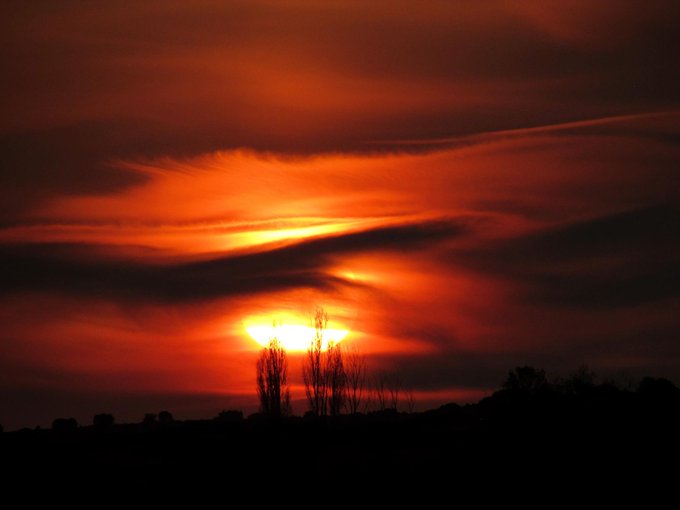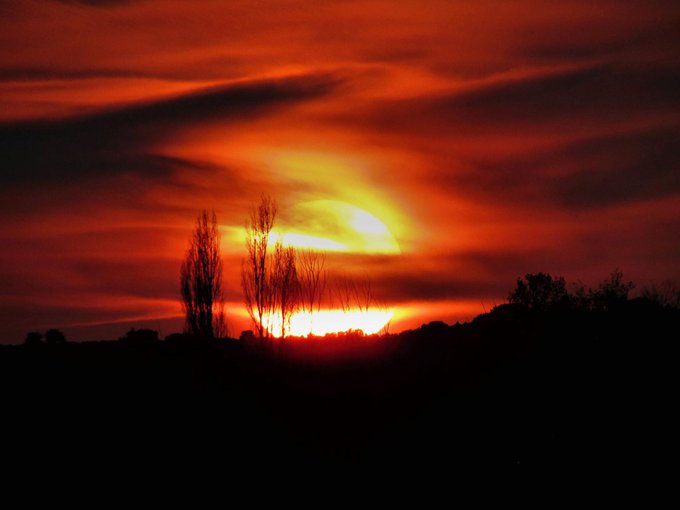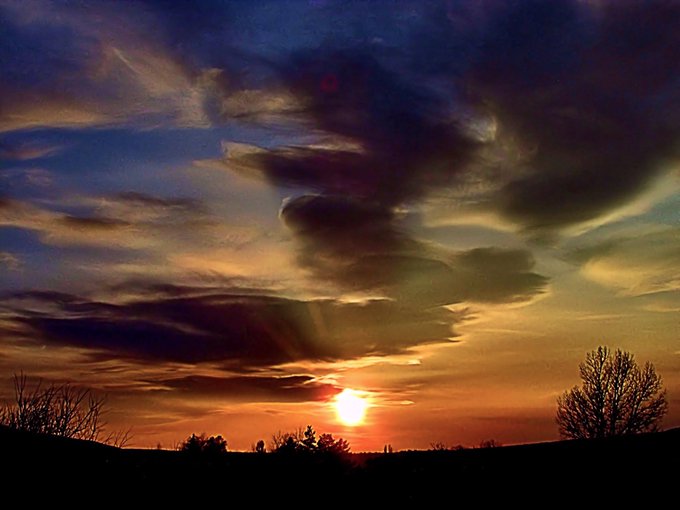By Alexa Lewis, AccuWeather.com Staff Writer
April 28,2015; 8:32PM,EDT
 See larger image below.
See larger image below.
Last week, smoke from Siberian wildfires spread all the way across the United States, reaching the East Coast. Fiery red sunsets delighted onlookers in the West.
Particles, including smoke, in the atmosphere transform how waves of light act as they travel toward Earth.
Smoke from Siberia made for an AWESOME sunset again last evening! #nvwx #smoke #siberia http://ozoneaq.gsfc.nasa.gov/omps/blog/2015/04/siberian-smoke-continues-over-us …
In addition to the particles in the atmosphere, the wavelength of each respective color of light also influences how it reaches Earth.
Blue light has a much shorter wavelength than red light. These shorter wavelengths are more easily scattered by a wildfire's debris.
But debris is less efficient in scattering the longer, red wavelengths allowing visible red light to reach the viewer.
"The smoke particles in the atmosphere help filter out the shorter wavelength colors of sunlight -- the greens, blues, yellows and purples, while the longer wavelength reds and oranges have a better chance of getting through the air unfiltered," according to Meteorologist Scott Sistek's blog on Komonews.com.
At sunset and sunrise the sky takes on similar hints of vibrant colors. The path of sunlight is much longer at dusk and dawn, forcing more blue light to scatter as it passes through a greater amount of atmosphere and number of particles.
While wildfires may create royal and bold skyscapes, they can devastate parts of forests. The containment of wildfires can also be costly.
For example, the wildfires in Siberia this April spread rapidly, killing about two dozen people and leaving thousands homeless, according to NASA.
In the U.S., The National Interagency Fire Center reported that six new large fires were reported the week of April 24 across Maine, North Dakota, Montana, California and Florida. Another seven fires were contained.
These fires tore through 4,109 acres of land, which is little compared to the 309,369 acres from a total of 14,213 contained wildfires calculated so far for 2015.
This agency has not yet provided information for 2015 regarding costs of suppressing these fires, but in 2014 it cost over $1.5 billion to suppress a total of 63,212 wildfires.
Wildfires become a concern in forests when the vegetation has become dry, especially during times of drought, and when there are strong winds, according to AccuWeather.com Meteorologist Ken Clark.
Smoke from fires can also contribute to poor air quality, which is especially dangerous for children, the elderly and anyone who suffers from respiratory illness.
 Image taken near San Jose, Calif. (Photo/Flickr/Creative Commons/Dawn Ellner)
Image taken near San Jose, Calif. (Photo/Flickr/Creative Commons/Dawn Ellner) (Photo/Instagram/rovingrose)
(Photo/Instagram/rovingrose) Image of the sky during a peak wildfire in Alberta in July 2014. (Photo/Twitter/@ABBestphotos)
Image of the sky during a peak wildfire in Alberta in July 2014. (Photo/Twitter/@ABBestphotos) Image of a sunset in Portland, Ore., as a fire burns west of the city in September 2014. (Photo/Instagram/teacupfangirl)
Image of a sunset in Portland, Ore., as a fire burns west of the city in September 2014. (Photo/Instagram/teacupfangirl) (Photo/NASA/Don Savage Photography)
(Photo/NASA/Don Savage Photography) Image taken during a wildfire near the Mojave Desert. (Photo/Flickr/Creative Commons/Rennett Stowe)
Image taken during a wildfire near the Mojave Desert. (Photo/Flickr/Creative Commons/Rennett Stowe) (Photo/Thinkstock/iStock)
(Photo/Thinkstock/iStock)



No comments:
Post a Comment